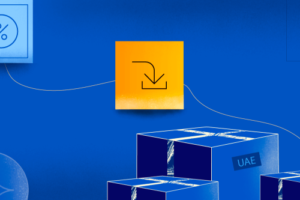At the end of April 2020, the news had made noise in the world of SEA: American e-merchants could now list their products for free in the Google Shopping tab. This measure had been in the Alphabet firm’s pipeline for a while and its implementation had in fact been advanced to provide some form of support to small traders during confinement.
The goal has been achieved, since free access has enabled hesitant companies to test Google Shopping and experience increased visibility thanks to a new traffic acquisition channel. But this measure was also an opportunity for Google to offer a free sample of the many possibilities offered by its Ads platform.
Free Google Shopping must therefore be taken for what it is: a valuable opportunity for online merchants, but an acquisition channel whose potential remains limited compared to paid use.
In this article, we explain to you the essentials of what there is to know about this opportunity available today in France and we give you two recommendations to go further and propel your e-commerce into another dimension.
Summary
- Is Google Shopping really free? Go back…
- How to take advantage of the new free Shopping sheets as an e-merchant?
- Our 1st recommendation: combine free and paid Google Shopping to boost your visibility
- Our 2nd recommendation: do not limit yourself to Google Shopping
- Frequently Asked Questions
- What is Google Shopping and how can it help your business?
- Why did Google decide to make Google Shopping free?
- How to effectively use Google Shopping for your business?
Is Google Shopping really free? Go back…
Admittedly, the argument put forward by Google for making its Shopping tab free was to support small shops, to help them switch more quickly into the digital marketing strategy world. But this measure also intervened in a context of increased competition with Amazon, which, in recent years, has come to tread on the flowerbeds of the leader of search engines.
In 2019, a study by eMarketer revealed that 66% of online product searches were now made on Amazon, compared to only 20% on Google. This loss of traffic on attractive queries was difficult for Google Ads to accept…
At the beginning of October of the same year, the platform had then announced an improvement to its Shopping tab, by integrating in particular:
- Visual search for products (and at the same time “visual shopping Ads”),
- A “buy with Google” function (integration of “shopping actions”),
- Shopify, WooCommerce, BigCommerce and PayPal partnerships to streamline the buying process.
A few months later, the announcement of a “Free Google Shopping” therefore made it possible to advance a new pawn on the chessboard in the game against Amazon.
However, of course, it was not a question of making this channel completely free and depriving ourselves of the advertising revenue it generates. While Google’s SERP therefore now reserves a place for organic results in its Shopping tab, it still gives pride of place to sponsored results, which retain the monopoly of the product carousel present in the main tab and at the top of the Shopping tab.
Here is, for example, what the Shopping tab can give on the request “swimsuit”:
How to take advantage of the new free Shopping sheets as an e-merchant?
If you’re already a Google Shopping user and have already connected your site’s product feed to it, the good news for you is that you don’t have to do anything extra to appear in the organic results. This is the principle: the Shopping tab now propels free products whose files correspond to the searches of Internet users.
Finally, when you are told that you have nothing to do, it is not entirely true…
You need to be more attentive than ever to the quality of the connection between the products on your site and their display in Google Shopping. Do not hesitate to optimize the mesh of your pages, the completeness of your XML sitemap or the configuration of your robots.txt file. It is about the ability of your feed to go up in the results on as many queries as possible.
And, for that matter, since we are talking about an organic channel, it can be beneficial to rework your SEO:
- Are your product titles self-explanatory and feature the main keywords?
- Are your descriptions rich enough to target long-tail searches?
- Have you correctly integrated prices, availability information, even trust signals?
If the intricacies of Ecommerce Seo Services don’t speak to you more than that, our experts are there to support you and help you take advantage of the opportunities linked to free Google Shopping.
Of course, if you don’t yet have a Google Merchant Center account, the items we just highlighted apply to you as well. Before you can put them into practice, you will simply have to start by creating your account!
Our 1st recommendation: combine free and paid Google Shopping to boost your visibility
Given the growing offer that online consumers have at their disposal, it is increasingly necessary to multiply the displays of a product to each Internet user to trigger a purchase. We therefore regularly insist on this point: use all the opportunities for visibility that you can seize.
Concretely, this means that you should not hesitate to multiply your acquisition channels, but also that you have to create several exposures within the same channel. This may mean several exposures over time, for example with retargeting strategies or several simultaneous exposures, in particular by combining sponsored views and organic views.
In this case, it is a question of appearing both in the paid results and in the free results of Google Shopping, as Back Market does here on the request “iWatch 6”:
By doing so, you double your chances of being seen by your prospect; which makes you both more identifiable and more credible in their eyes, two important levers for boosting your click-through rate.
Our 2nd recommendation: do not limit yourself to Google Shopping
As we told you in the introduction, Google is no longer necessarily the priority acquisition channel for e-merchants. Certainly, the scope and versatility of its environment makes it a partner of choice, but in many sectors, it is not uncommon to generate more traffic on other channels.
If your business lends itself to it, Amazon, which has become the reflex of a majority of online consumers when it comes to carrying out a search for a purchase, can open up an extremely large audience for you.
Social Media platforms can also offer an excellent alternative to Google Shopping, with, as with Google, the integration of internal checkout features on some of them.
And, in the months and years to come, we also expect to see the arrival in the world of SEA of new independent agencies, playing the “first-party data” card.
Limiting yourself to Google Shopping would actually mean giving up many opportunities to your competitors.
So, you’ve understood it: free Google Shopping is a chance for merchants, especially for those who are still a little advanced in their digital transition and can thus get started without taking any risk. But, to move up a gear, it is essential not to be limited to it and to quickly turn to the sponsored ads of the shopping tab and to the other Ads channels.














